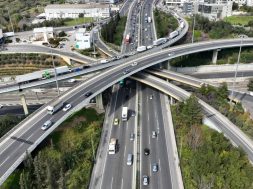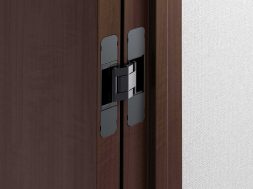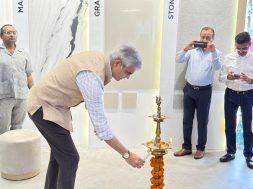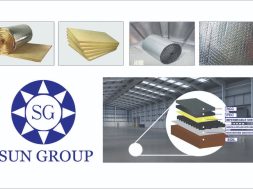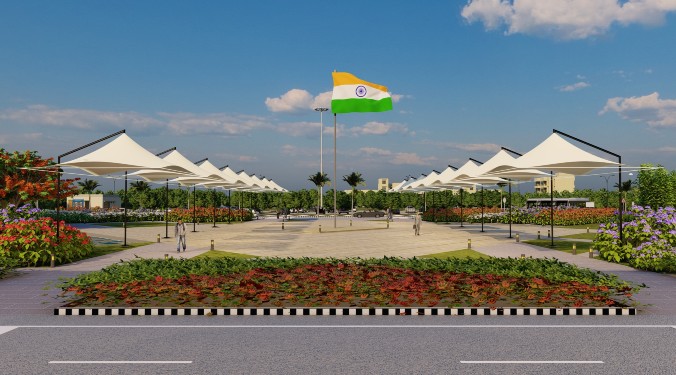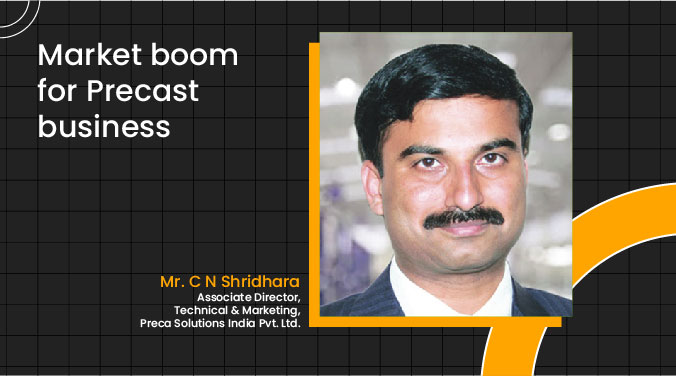“Vision of smart cities in India by Prime Minister Narendra Modi can be achieved through energy efficient and green building developments,” believes Mala Singh, CMD, PEC Greening India Group
PEC Greening India Group plays a huge contributory role in achieving energy efficiency in buildings. The group also spreads awareness regarding energy efficient and green buildings through builder orientation programs, PMC and labour workshops, conferences, seminars and also through mass media publications to reach out to the common man. In a conversation with ACE Update, Mala Singh shares why the dream of sustainable India can come true.
Energy-efficient criteriaFor a building to be energy efficient, it needs to achieve its proficiency in the many ways. The focus is the systems and technologies used in the building which uses ample amount of electricity. To reduce energy consumption, adoption of energy-efficient, sustainable technologies helps save electricity cost. The systems responsible for overall energy consumption are air-conditioning system, heating and cooling system, lighting system, building envelope design, and other miscellaneous equipment used for various purposes.
HVAC system accounts for a major portion in the building’s energy consumption as it regulates the indoor environmental factors such as temperature, humidity, and air quality. The influence of HVAC system upon energy consumption may vary for buildings depending upon the nature and typology of the building. For instance, in centrally air-conditioned buildings which are often energy guzzlers, an intelligent HVAC system with zone wise controls will help reducing the overall energy consumption, especially a system which is designed with world-class standards or nationally applicable standards. In buildings with unitary air-conditioning systems, star-rated air conditioners assure energy efficiency. An energy-efficient lighting design is highly beneficial for any building. Maximum use of daylight integrated with an efficient artificial lighting layout and energy-efficient lighting fixtures like LED and CFL are highly beneficial to achieve energy efficiency at a larger level. Incorporation of lighting controls like occupancy sensors and daylight sensors help increase the proficiency of the lighting system to save the overall energy cost.
An optimised building envelope or in other words, a smart and intelligent/climate responsive design can help determine the amount of lighting, heating, and cooling a building will require. Energy-efficient roof and wall construction with proper thermal insulation, optimum window wall ratio, intelligent use of glass, and well-designed shading devices in building façade help maintain the desired heat gain/loss thereby reducing the overall energy requirement. Passive strategies like proper building orientation, shading devices, courtyards, buffer spaces, evaporative cooling, and sun spaces also contribute to maintain comfort within building, thus reducing energy consumption. Use of star-rated energy efficient equipment and appliances also save huge amount of energy and electricity costs. Incorporating solar water heating system, solar lighting for exterior, wind mills, and geothermal energy help in reducing the overall load upon conventional energy sources which finally helps a project save a huge amount of energy and electricity costs.
Perfect design of an energy efficient buildingFor an energy-efficient building, incorporating climate responsive building design strategies in design stage itself is vital. By incorporating efficient measures in the design, the targeted building energy consumption can be lesser than the standard energy requirements. A perfect design for an energy-efficient building begins with the analysis of the macro and micro-climatic conditions, including solar, wind, vegetation, soil, and water. Further on optimum active and passive strategies should be incorporated into the building design for harnessing the same at the site.
Passive strategies as per climate and site conditions like the building orientation, building envelope, shading devices, window wall ratio, natural ventilation, daylight, evaporative cooling, earth tube cooling, and sun spaces are cost-effective steps to reduce the building energy demand and consumption.
Active systems like HVAC system, lighting systems, and equipment should be designed based on the reduced energy demand arising from passive strategies. Efficient HVAC systems based on their COP, lighting fixtures to achieve reduced LPD, and star-rated equipment should be proposed in the project.
Incorporation of renewable energy systems, DG sets for power backup, building maintenance and automation systems to monitor the performance of energy systems help reduce overall energy consumption. The capital cost involved in these systems can be recovered through direct savings achieved.
‘Energy harvest’ vs ‘energy conservation’There has been a long standing debate between energy harvest and energy conservation. While energy harvest focuses on harvesting renewable energy like solar, wind, thermal energy and storing into wireless autonomous devices, energy conservation moreover deals with strategies aimed at reducing the overall energy demand. There does not arise a need to choose one entity over the other as both energy harvesting and energy conservation measures if properly integrated in building will yield energy-efficient green buildings. In a green building, various strategies like use of efficient HVAC system, use of efficient lighting, provision of user controls and optimum behaviour approach help in assuring energy conservation.
However, there may be shortcomings in the behavioural approach of building users which can counteract by building automation and intelligent building systems. In such cases, controls like occupancy sensors and daylight sensors become useful, which help in assuring minimal energy wastage and optimal use. Such controls, if integrated with energy harvesting through renewable energy resources, will create intelligent control devices like sensor network systems. This will definitely result in the creation of smart and intelligent green buildings.
Designing passive solar buildings Passive solar building design incorporates natural energy sources and sinks, e.g. solar radiation, outside air, wet surfaces, and landscape, depending on the climate. Indian architectural carries a rich heritage of passive solar buildings like forts, palaces, museums, government buildings, commercial buildings and residences based on the diverse climatic conditions. In the modern times, India has seen many developments in the green building sector like government policies, Energy Conservation Building Code, and IGBC and GRIHA rating systems. These are being effectively incorporated by many responsible stakeholders of the construction industry. There should be optimisation of human behaviour approach along with effective operation and maintenance systems in buildings to achieve and monitor the data bank of energy consumption reduction in the building, thereby helping reduce carbon footprints.
Challenges to develop energy efficient buildings Absence of green build mandate policy by the Government of India, lack of commitment towards green development by the developer (few developers have shown their passion till so far towards Green development), misconceptions about the additional cost of green buildings and its benefits, non-integration of green design strategies in planning by the project team, lack of awareness about green products and technologies and behavioural anomalies to adopt green, lack of skilled labour, and lack of adequate incentives for energy-efficient buildings are some of the challenges to build energy-efficient buildings.
PEC Greening and energy-efficient buildings PEC Greening India Group plays a huge contributory role in achieving energy efficiency in buildings. The group has made energy efficiency one of its main aims when transforming its projects into green and responsible developments from the design stage itself by involving all the project consultants and developers. It also spread awareness regarding energy efficient and green buildings through builder orientation programs, PMC and labour workshops, conferences, seminars and also through mass media publications to reach out to the common man.
Its New Paryavaran Bhavan in Gandhinagar is LEED Gold certified building. This building has incorporated courtyard architecture with proper fenestration design and recessed windows in design which is a key feature resulting in reduced energy consumption. But the highlight of this sustainable building is the provision of an 80kW grid connected solar power plant system on the terrace which helps make the building energy positive. This solar power system is directly connected online to the grid such that the generated power is used by the building with the surplus going to the grid which in turn gives monetary benefits to the owners.
In addition to that, the group is involved in transforming more than 91 million sq. feet of building footprint into green across the country, covering various categories of projects like residential, office buildings, schools, universities, hotels, malls, and ports. Its strong connectivity and inspiration process to all kind of stakeholders of the country including government organisations, private developers, various institutions and societies will not only help them in transforming India but also will set an example of making India a responsible country towards green at global level.
Mala Singh also sums up that Prime Minister Narendra Modi’s vision towards existing cities’ retrofitting and smart cities’ development can be only achieved if energy efficient and green buildings will be considered as a mandate for all kind of developments by the government. Hence, the dream of sustainable India can come true.
Cookie Consent
We use cookies to personalize your experience. By continuing to visit this website you agree to our Terms & Conditions, Privacy Policy and Cookie Policy.


